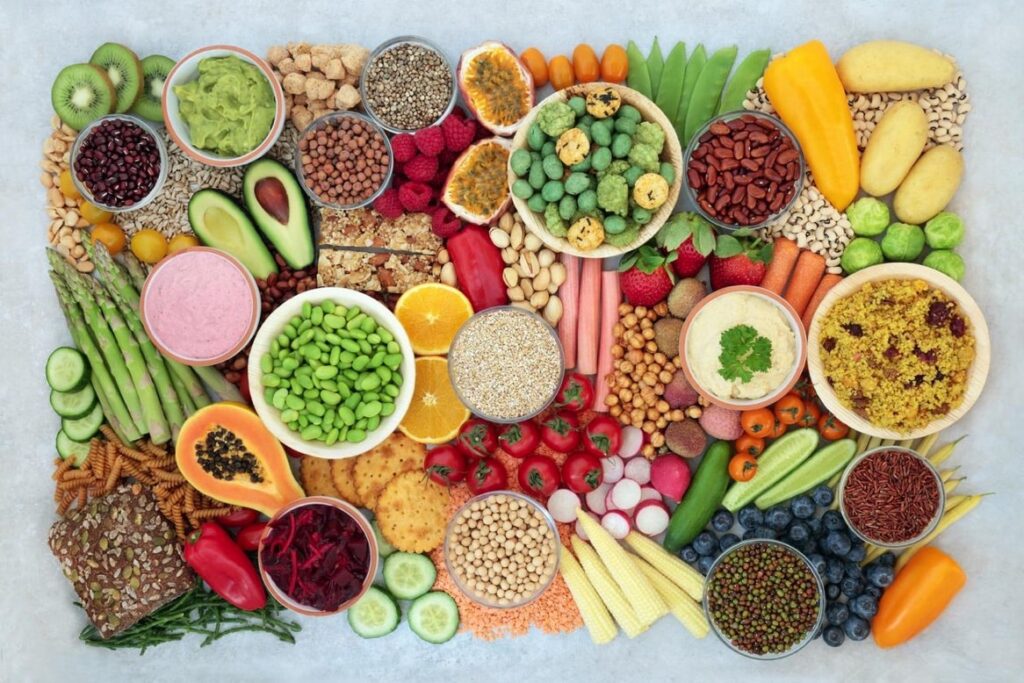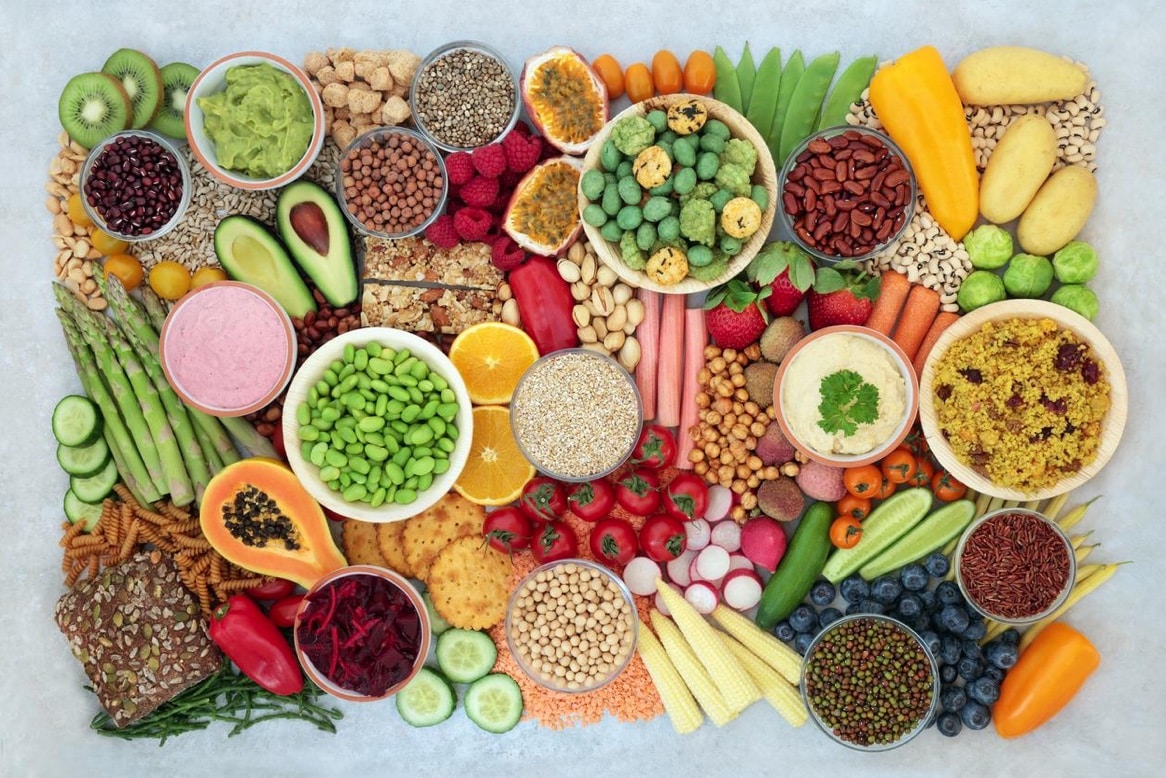
Navigating the Dairyless Diet: A Comprehensive Guide
The dairyless diet, an eating plan that excludes all dairy products, has gained considerable traction in recent years. Individuals adopt this diet for various reasons, ranging from managing lactose intolerance and dairy allergies to ethical considerations and perceived health benefits. This comprehensive guide delves into the intricacies of the dairyless diet, exploring its benefits, challenges, and practical tips for successful implementation.
Understanding the Dairyless Diet
A dairyless diet involves eliminating all products derived from animal milk, primarily cow’s milk, but also including milk from goats, sheep, and other mammals. This encompasses a wide range of foods, including milk, cheese, yogurt, butter, cream, ice cream, and many processed foods that contain dairy as an ingredient. It’s crucial to meticulously read food labels to identify hidden sources of dairy, such as whey, casein, and lactose.
Reasons for Adopting a Dairyless Diet
Several factors contribute to the growing popularity of the dairyless diet:
- Lactose Intolerance: Lactose intolerance is a common condition where the body has difficulty digesting lactose, a sugar found in milk. Symptoms can include bloating, gas, diarrhea, and abdominal pain. A dairyless diet effectively eliminates these symptoms for affected individuals.
- Dairy Allergy: A dairy allergy is an immune response to proteins in milk, such as casein and whey. Allergic reactions can range from mild skin rashes and hives to severe anaphylaxis. A strict dairyless diet is essential for managing dairy allergies.
- Ethical Considerations: Some individuals choose a dairyless diet for ethical reasons, such as concerns about animal welfare and the environmental impact of dairy farming.
- Perceived Health Benefits: Some proponents of the dairyless diet believe it can improve overall health, reduce inflammation, and alleviate certain conditions like eczema and acne. However, scientific evidence supporting these claims is often limited and requires further investigation.
Benefits of a Dairyless Diet
While individual experiences may vary, a well-planned dairyless diet can offer several potential benefits:
- Improved Digestion: For individuals with lactose intolerance or dairy allergies, eliminating dairy can significantly improve digestion and alleviate gastrointestinal symptoms.
- Reduced Inflammation: Some studies suggest that dairy consumption may contribute to inflammation in certain individuals. A dairyless diet may help reduce inflammation and associated symptoms.
- Clearer Skin: While the link between dairy and skin conditions is not fully understood, some people report improvements in acne and eczema after eliminating dairy from their diet.
- Weight Management: A dairyless diet can indirectly contribute to weight management by encouraging the consumption of whole, unprocessed foods and reducing the intake of high-fat dairy products.
Challenges of a Dairyless Diet
Transitioning to and maintaining a dairyless diet can present certain challenges:
- Nutrient Deficiencies: Dairy products are a significant source of calcium, vitamin D, and protein. Eliminating dairy requires careful planning to ensure adequate intake of these essential nutrients from alternative sources.
- Hidden Dairy Ingredients: Dairy is a common ingredient in many processed foods. Reading food labels meticulously is crucial to avoid accidental consumption of dairy.
- Social Situations: Navigating social situations, such as eating out or attending parties, can be challenging when following a dairyless diet. Clear communication with restaurants and hosts is essential.
- Cost: Dairy-free alternatives, such as plant-based milks and cheeses, can sometimes be more expensive than their dairy counterparts.
Tips for a Successful Dairyless Diet
Here are some practical tips to help you successfully navigate a dairyless diet:
- Read Food Labels Carefully: Pay close attention to ingredient lists and look for hidden sources of dairy, such as whey, casein, lactose, and milk solids.
- Explore Dairy-Free Alternatives: Experiment with various plant-based milks (almond, soy, oat, coconut), cheeses (cashew, almond, soy), and yogurts (coconut, almond, soy) to find your favorites.
- Focus on Whole, Unprocessed Foods: Build your diet around whole, unprocessed foods like fruits, vegetables, lean proteins, and whole grains. These foods are naturally dairy-free and provide essential nutrients.
- Plan Your Meals: Planning your meals in advance can help you avoid impulsive food choices that may contain dairy.
- Cook at Home More Often: Cooking at home gives you greater control over the ingredients you use and allows you to ensure that your meals are dairy-free.
- Communicate Clearly: When eating out or attending social events, communicate your dietary needs clearly to the restaurant staff or host.
- Supplement Wisely: Consider taking a calcium and vitamin D supplement, especially if you are not consuming adequate amounts of these nutrients from other sources. Consult with a healthcare professional or registered dietitian to determine the appropriate dosage.
- Be Patient and Persistent: It takes time to adjust to a new diet. Be patient with yourself and don’t get discouraged if you slip up occasionally. The key is to learn from your mistakes and keep moving forward.
Dairy-Free Alternatives
The market for dairy-free alternatives has exploded in recent years, offering a wide variety of options to replace traditional dairy products:
- Plant-Based Milks: Almond milk, soy milk, oat milk, coconut milk, rice milk, and cashew milk are all popular dairy-free milk alternatives. Each type of milk has a unique flavor and nutritional profile.
- Dairy-Free Cheeses: Dairy-free cheeses are typically made from nuts (cashews, almonds), soy, or tapioca starch. They come in various forms, including shreds, slices, and blocks, and can be used in the same way as traditional cheese.
- Dairy-Free Yogurts: Dairy-free yogurts are made from plant-based milks, such as coconut milk, almond milk, or soy milk. They are often fortified with probiotics, similar to traditional yogurt.
- Dairy-Free Ice Creams: Dairy-free ice creams are made from plant-based milks, such as coconut milk, almond milk, or oat milk. They come in a wide variety of flavors and are often just as creamy and delicious as traditional ice cream.
- Dairy-Free Butter: Dairy-free butter alternatives are typically made from plant-based oils, such as coconut oil, olive oil, or avocado oil. They can be used in the same way as traditional butter in cooking and baking.
- Dairy-Free Creamers: Dairy-free creamers are made from plant-based milks, such as almond milk, soy milk, or coconut milk. They can be used to add creaminess to coffee and other beverages.
Nutrient Considerations on a Dairyless Diet
When following a dairyless diet, it’s essential to pay attention to your nutrient intake to avoid deficiencies. Here are some key nutrients to focus on:
- Calcium: Calcium is essential for bone health, muscle function, and nerve transmission. Good sources of calcium include leafy green vegetables (kale, spinach, collard greens), fortified plant-based milks, tofu, and almonds.
- Vitamin D: Vitamin D is important for calcium absorption and bone health. The best source of vitamin D is sunlight exposure, but it can also be found in fortified plant-based milks, mushrooms, and supplements.
- Protein: Protein is essential for building and repairing tissues. Good sources of protein include lean meats, poultry, fish, beans, lentils, tofu, and nuts.
- Vitamin B12: Vitamin B12 is important for nerve function and red blood cell production. It is primarily found in animal products, so vegans and strict vegetarians may need to supplement with vitamin B12. Fortified plant-based milks and nutritional yeast are also good sources.
Conclusion
The dairyless diet can be a beneficial dietary approach for individuals with lactose intolerance, dairy allergies, or those who choose to avoid dairy for ethical or health reasons. By carefully planning your meals, exploring dairy-free alternatives, and paying attention to your nutrient intake, you can successfully navigate a dairyless diet and enjoy its potential benefits. Remember to consult with a healthcare professional or registered dietitian for personalized advice and guidance. A dairyless diet requires commitment and knowledge, but with the right approach, it can be a sustainable and healthy way of eating.
Ultimately, the decision to adopt a dairyless diet is a personal one. Consider your individual needs, preferences, and health goals before making any significant dietary changes. With careful planning and attention to detail, a dairyless diet can be a healthy and sustainable way to nourish your body and achieve your wellness goals. The key is to ensure you are getting all the necessary nutrients from alternative sources and that you are making informed choices about the foods you consume. Embracing a dairyless diet can open you up to a whole new world of culinary possibilities and empower you to take control of your health and well-being.
[See also: The Ultimate Guide to Dairy-Free Baking] [See also: Delicious Dairy-Free Recipes for Beginners] [See also: Understanding Lactose Intolerance and How to Manage It]

